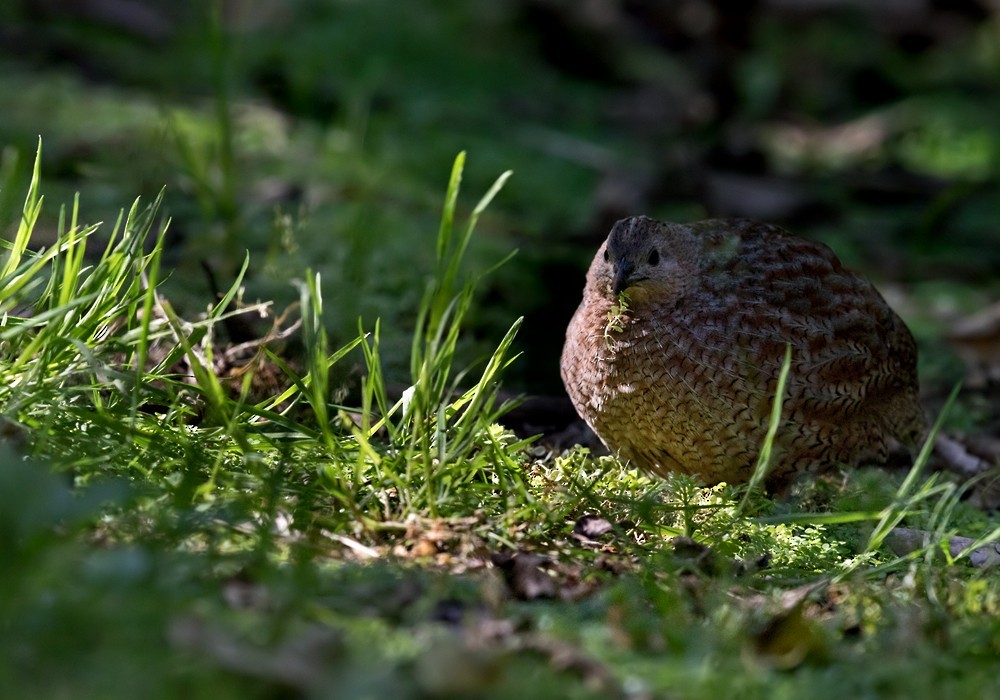Brown Quail
A species of Typical Old World Quails Scientific name : Synoicus ypsilophorus Genus : Typical Old World Quails
Brown Quail, A species of Typical Old World Quails
Botanical name: Synoicus ypsilophorus
Genus: Typical Old World Quails
Content
Description General Info
 Photo By Lars Petersson
Photo By Lars Petersson Description
The brown quail is a plump, stocky bird growing to a length of 17 to 22 centimetres (6.7 to 8.7 in) and weight of 75 to 140 grams (2.6 to 4.9 oz). The colour is quite variable over the bird's wide range. The male is reddish-brown speckled with black on the head and upper neck and mainly reddish-brown on back and wings. The underparts range from buff or rufous to brown, but always with fine black chevron-shaped barring. The tail is short, dark brown with yellowish barring. The female is similar but rather paler. There are small black spots on the shoulder of the female and the upperparts are barred with dark chevron-shaped markings. The voice consists of a variety of shrill calls with which the birds communicate as they move through dense vegetation. One call is a double whistle, the latter note ascending. 
Size
22 cm
Nest Placement
Ground
Feeding Habits
Brown Quail primarily consume seeds from various grasses and herbs, supplementing their diet with leaves, worms, isopods, and insects. They forage on the ground, usually in small groups, gleaning food from litter and soil.
Habitat
The habitat of brown Quail spans wet grasslands, shrublands with dense grass, moist meadows, savannas, and agricultural areas with crops such as rice. They are found in coastal scrubs, open woodlands, and areas with dense aquatic vegetation near freshwater wetlands, as well as in saltmarshes, particularly in New Zealand. These birds adapt to various environments, including temporary grasslands that emerge in inland areas following significant rainfall events.
Dite type
Granivorous
General Info
Feeding Habits
Bird food type
Distribution Area
The brown quail is distributed in agricultural areas, wet grasslands, shrublands, spinifex savannah, and freshwater wetlands across much of New Guinea and the Lesser Sunda Islands as well as in northern, eastern, south-eastern and south-western Australia and Tasmania, though absent from arid regions. This species has been introduced to Fiji and New Zealand. In Australia it is mostly a lowland species but in New Zealand it is found at altitudes up to 1,000 metres (3,300 ft) and in New Guinea up to 3,700 metres (12,000 ft). It was introduced to New Zealand in the 1860s and 1870s and is now present in North Island and certain offshore islands. This introduction, and other quail introductions that failed to establish, may have played a part in the demise of the New Zealand quail, an endemic species that became extinct shortly afterwards, possibly because of a lack of resistance to some new disease. 
Species Status
The brown quail has a very wide range and is common in much of that range. The International Union for Conservation of Nature has assessed its conservation status as being of "least concern". Although the population has not been quantified, and may be declining slightly, it does not seem to be at such a rate as to warrant listing the species in a more threatened category. 

 Photo By Lars Petersson
Photo By Lars Petersson